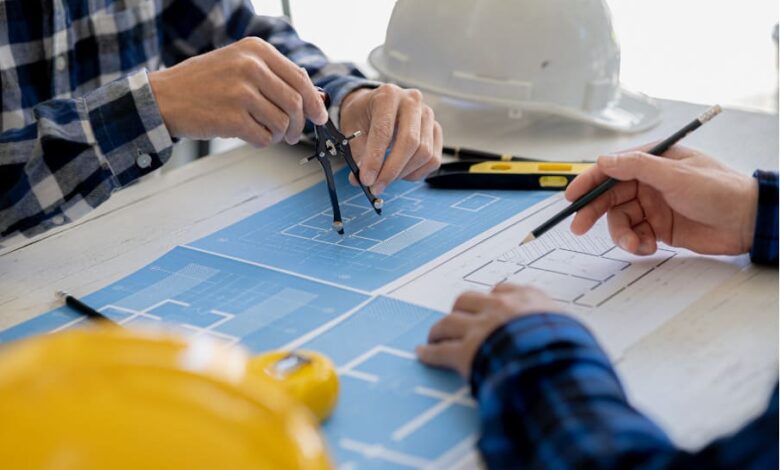
In the quick-paced global of design and creation, precision and clarity are essential for every successful project. Whether developing business infrastructure or crafting the proper residential space, the foundation lies in drafting properly. Among all strategies, 2D drafting remains one of the most essential tools used by architects, engineers, and engineers.
Despite the recognition of 3D modeling and visualization, 2D drafting continues to function as the backbone of accurate documentation and communication across the design and construction industries. It helps the whole thing from initial layout to special construction plans. When mixed with creation estimating offerings and indoor layout strategies, it will become an effective asset in making sure that thoughts are not handiest visually compelling but also feasible and cost-effective.
What is 2D Drafting?
2D drafting refers to the creation of two-dimensional technical drawings that constitute architectural or engineering elements of a mission. These drawings are frequently created the usage of laptop-aided design (CAD) software and encompass plans, sections, elevations, and element perspectives that communicate the scale, materials, and layout of a structure.
Unlike 3-D fashions, which give visible depth and simulation, 2D drawings focus on accuracy and measurability. They are used for the duration of the lifecycle of a task—from layout concept and budgeting to creation and first-rate management.
Why 2D Drafting Still Matters
In today’s design enterprise, wherein digital tools and software continue to evolve, 2D drafting continues its significant for several reasons:
- Accuracy and Precision
2D drafting gives incredibly correct technical data. Every line, symbol, and size is intentional. For engineers and contractors, this level of element is crucial to keep away from high-priced errors at any stage of creation.
- Clear Communication
Contractors, suppliers, and developers rely on 2D drawings as a widespread language. These documents are standardized and without problems interpreted by way of specialists on-site.
- Construction Planning
Whether it’s a residential redesign or an industrial skyscraper, creation starts with plans. These plans have evolved the use of 2D drafting, which offers a comprehensive view of the challenge’s shape and additives.
Integrating 2D Drafting with Construction Estimating Services
One of the maximum essential uses of 2D drawings is in creation estimating services. Estimators use those technical drawings to determine the substances, hard work, and time required to finish a undertaking. Without accurate drafting, estimating fees turns into a guessing game—one that would bring about financial loss.
Here’s how 2D drafting supports correct estimating:
- Quantity Takeoffs: Estimators extract dimensions from 2D plans to calculate materials, along with concrete, metallic, drywall, and flooring.
- Labor Costs: Layouts assist in deciding the complexity of work, permitting estimators to forecast exertion hours.
- Budget Allocation: With particular measurements and scaled drawings, estimators can allocate resources more successfully, decreasing waste.
Reliable construction estimating services depend on clear, constant 2D drawings to construct accurate fee fashions. When estimators have get entry to to nicely-based drafts, they are able to offer clients extra aggressive pricing and sensible task timelines.
2D Drafting and Interior Design: A Perfect Partnership
In the sphere of interior layout, 2D drafting plays a primary function in reworking creative imagination and prescient into buildable fact. Designers use floor plans, elevations, and fixture layouts to give ideas and collaborate with customers and developers.
Here’s how 2D drafting helps indoors designers:
- Space Planning: Designers map out furnishings, lights, and move pathways to make sure the ultimate use of space.
- Material Coordination: Drawings suggest cloth transitions, finishes, and specs.
- Client Communication: Visual plans assist customers in apprehending the spatial and layout reasons before physical changes begin.
While 3D rendering may be flashier for presentation, 2D plans are the working documents used by contractors and builders to enforce design choices appropriately. Interior designers regularly collaborate with production estimating services to make sure that selected finishes and furnishings remain within the client’s finances.
Benefits of Professional 2D Drafting Services
Engaging an expert drafter or drafting group ensures a better general understanding of first-class drafting and compliance with enterprise norms. Whether you’re an architect, interior designer, or contractor, operating with professional drafters brings several benefits:
- Code Compliance
Professional drafters are well-versed in nearby building codes and guidelines, ensuring that drawings are permit-equipped.
- Coordination Between Trades
2D drawings serve as a reference factor for electricians, plumbers, structural engineers, and HVAC installers, helping coordinate systems inside the same format.
- Cost Efficiency
Accurate drafts prevent production delays and high-priced revisions by way of catching mistakes at the start. They also permit special collaboration with production estimating services to optimize spending.
Working with Construction Estimating Companies
Many construction professionals now turn to construction estimating company to deal with budgeting and forecasting. These firms depend heavily on 2D drafting to develop clean, itemized fee breakdowns for clients. A precise 2D plan helps estimators:
- Understand structural complexity
- Determine the scope of work
- Estimate accurate timelines
By outsourcing estimating to experts, architects and interior designers can consciousness on innovative aspects, knowing their ideas are financially supported by means of expert analysis.
The Future of 2D Drafting in Design and Construction
Although more recent technology like Building Information Modeling (BIM) is developing in recognition, 2D drafting remains important. It is fast, scalable, and exceptionally on hand—perfect for initial making plans, short revisions, and designated documentation. Most authorities permit workplaces and contractors to still require 2D plans as part of the submission bundle.
As the design industry continues to evolve, 2D drafting will remain an essential part of the ecosystem, especially when paired with creation, estimating services, and design disciplines like interior layout. Together, those offerings build a holistic method to planning, designing, and turning in successful production tasks.
Conclusion
At the coronary heart of each successful task lies a stable plan, and that plan starts with 2D drafting. It is the device that transforms innovative standards into technical such, such that the manual creates, estimates expenses, and realizes layout visions.
Whether you are building a home, renovating a workspace, or growing an industrial property, integrating 2D drafting, interior design services, and creation estimating offerings guarantees that each issue of your project is thoughtfully designed, efficiently budgeted, and done with precision.




